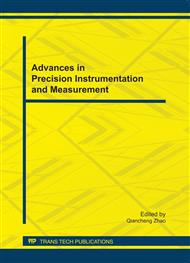p.442
p.447
p.452
p.458
p.464
p.469
p.475
p.480
p.488
Acoustic Emission Monitoring Technology Used in the Ceramics Grinding Cut Depth Control
Abstract:
Precision grinding on brittle materials accomplished without generating subsurface fracture damage is called ductile-regime grinding. The most important key point for maintaining a ductile material removal regime is to ensure that the cut depth made by grinding process does not exceed the critical cut depth. Through collecting and processing the acoustic emission(AE) signals generated by zirconia (PSZ) ceramic grinding tests, and analyzed the characteristics of AE signals under different grinding parameters. As a result of the experiments described in this paper, it can be concluded that AE signals measured during micro-grinding are sensitive to the changes of cut d- epths. The relationship between AE signals and material removal regime could lead to an in-process sensing strategy of the cut depths for ensuring grinding processes under ductile regime.
Info:
Periodical:
Pages:
464-468
Citation:
Online since:
September 2011
Authors:
Price:
Сopyright:
© 2012 Trans Tech Publications Ltd. All Rights Reserved
Share:
Citation:


